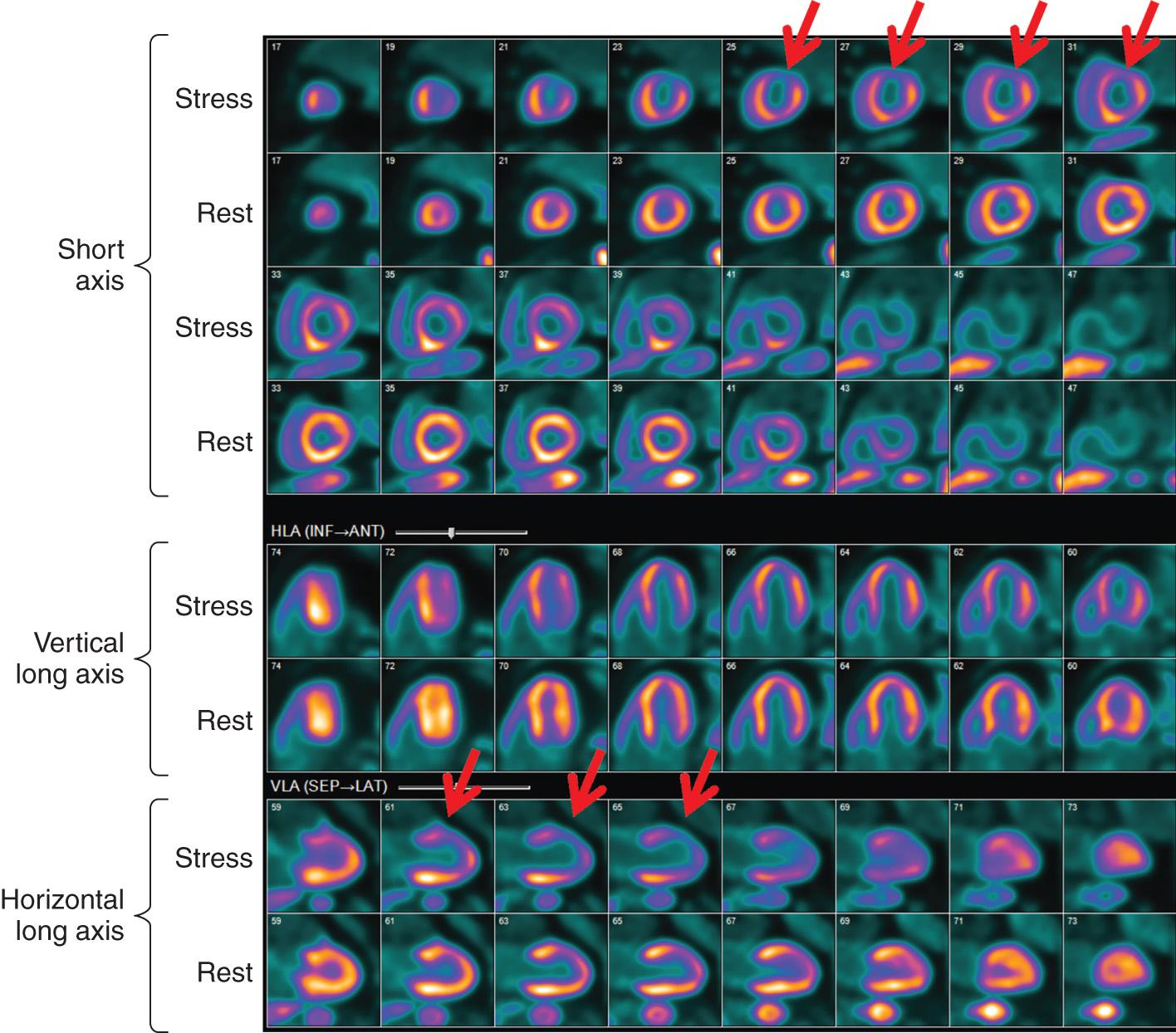Physical Address
304 North Cardinal St.
Dorchester Center, MA 02124
A positron, as its name implies, is a positively charged particle that is ejected from the nucleus of an unstable atom. It is identical in mass to an electron. Strictly speaking it is “antimatter,” and very shortly after leaving the nucleus, it collides with an electron in what is called an annihilation reaction. This reaction generates two 511-keV gamma photons that are emitted almost diametrically opposite from each other. The energy of these photons is captured by a special positron emission tomography (PET) scanner, and through a sophisticated network of electronics as well as computer software and hardware, it is transformed into an image.
Rubidium-82 (Rb-82) and nitrogen-13 (N-13) ammonia. An example of an N-13 ammonia PET stress test is shown in Fig. 9.1 .

Rb-82 is a monovalent cation analog of potassium. It is commercially available as a strontium-82 generator. Its physical half-life is 75 seconds. It is extracted with high efficiency by myocardial cells through the Na/K/ATPase pump. The adult radiation dose from a Rb-82 myocardial perfusion scan (MPS) varies from 1.75 to 7.5 mSv.
N-13 ammonia is an extractable myocardial perfusion tracer, which due to its 10-minute half-life, requires an on-site cyclotron. It is retained in myocardial tissue as N-13 glutamine by the action of glutamine synthetase. The adult radiation dose from an N-13 ammonia MPS is approximately 1.4 mSv.
It is more sensitive and specific (93% and 92%, respectively).
It is cost effective. This is primarily due to a reduction in unnecessary coronary angiographies.
It results in lower radiation dose to the patient.
It allows for absolute quantification in myocardial blood flow (MBF) in mL/min/g of tissue.
Become a Clinical Tree membership for Full access and enjoy Unlimited articles
If you are a member. Log in here